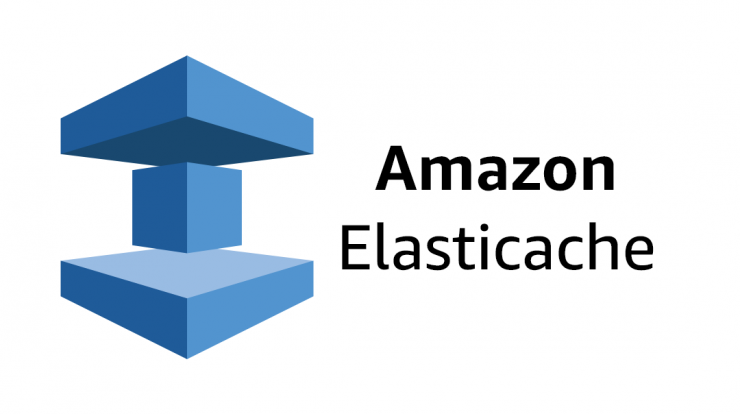
AWS ElastiCache may be a managed caching service compatible with each Redis and mecached. Once it involves Redis, ElastiCache offers a totally managed platform that creates it simple to deploy, manage, and scale a high performance distributed in-memory knowledge store cluster. These capabilities will considerably decrease the operational overhead in maintaining machines, software package fix, monitoring, failure recovery, and backups. AWS ElastiCache is absolutely compatible with the standard Redis knowledge structures, APIs, and purchasers, permitting your existing applications that already use Redis to start out victimization ElastiCache with none code changes.
It supports each Redis cluster and non-cluster modes, providing increased high availableness and responsibleness, with automatic failover situations across availableness zones. With the support of on-line cluster resizing, ElastiCache makes it simple to scale in or call at order to adapt to dynamic system demands with none period of time.
From a security and compliance purpose of read, AWS ElastiCache has inbuilt VPC support and offers coding in-transit and at-rest capabilities, combined with the native Redis AUTH feature for authentication and authorization support. As a web service running in the computing cloud, Amazon ElastiCache is designed to simplify the setup, operation, and scaling of memcached and Redis deployments.
History
Amazon ElastiCache was first released on August 22, 2011, that support memcached. This was followed by support for reserved instances also on April 5, 2012 and Redis on September 4, 2013.
Amazon ElastiCache Use Cases

Today’s internet users don’t have plenty of patience. In fact, in line with a study revealed by The New York Times, a 250-millisecond distinction in latency between competitor sites ultimately interprets into an enormous distinction in user retention. The study noted that users irresistibly withdraw from the slower web site in favor of the marginally quicker rival. Amazon even conducted their own tests wherever they saw similar results. It’s due to such problems that Amazon saw the necessity to introduce AN ultrafast caching service. AWS ElastiCache presently acts as AN in-memory key-value store with sub-millisecond latency — consequently permitting internet applications to quickly retrieve knowledge over and once again while not the necessity to perform the queries.
Administrators of read-intensive internet applications, as an example, use ElastiCache for time period transactional and analytical process to boot, they get to automatize a spread of tasks — like knowledge backups, failure recovery, configuration setup, software package fix, and hardware provisions.
As such, AWS ElastiCache is particularly ideal for use cases like:
- Performing geospatial processes
- Updating and managing leaderboards in the gaming industry
- Monitoring the status of customers’ accounts on subscription-based sites
- Processing and relaying messages on instant messaging platforms
- Online media streaming
- Conducting real-time analytics while customers shop on e-commerce sites
Benefits and Limitations of ElastiCache
Amazon ElastiCache is bound to impact its users’ systems in many different ways as specialized cloud service with a dynamic range of use cases.
Here are some of the pros and cons of Amazone Elasticache.
Pros of Amazone ElastiCache.
- Fully-managed
ElastiCache is a fully-managed cloud-based solution. In simple word, you enjoy the advanced caching capabilities that it offers, you don’t have to worry about backups, failure recovery, monitoring, configuration, setups, software patching, and hardware provisions, all done with ease.
- Improves application performance
ElastiCache provides in-memory data stores that substantially reduce the overall response times. The improvement is so huge that standard read or write operations end up taking less than a millisecond.
- Easily scalable
Amazon ElastiCache allows you to begin small and then progressively scale up your capabilities as the application grows. Expand your Redis cluster environment to as much as 500 shard and 500 nodes, plus possibly even increase your cluster’s in-memory data up to 340TB. Then if you need to reduce costs, you can conveniently scale down the resources without experiencing any form of downtime.
- Highly available
Apart from both cluster and non-cluster modes, AWS ElastiCache achieves high availability through automatic failover mitigation and detection. Node failures, for instance, are immediately resolved by standby replicas. The same applies to reading operations — if the primary one is busy, the read replicas swing into action to serve the data and keep your application running smoothly.
Cons of Amazon ElastiCache
- Limited to Amazon-Hosted Services
- Learning curve
- Expensive
AWS ElastiCache vs. CloudFront

While AWS ElastiCache and AWS CloudFront square measure each caching solutions, their individual approaches and overall framework take issue greatly. ElastiCache, for starters, enhances the performance of internet applications by quickly retrieving data from fully-managed in-memory knowledge stores. It utilizes Memcached and Redis, and manages to significantly scale back the time your applications would, otherwise, go for browse knowledge from disk-based databases.
Amazon CloudFront seeks to spice up the performance of internet applications too. But, not like ElastiCache, it acts as a Content Delivery Network (CDN) — that accelerates the delivery of web-based assets through end caches that square measure positioned getting ready to the traffic supply. In different words, your internet guests load content from the highest caching server, rather than relying entirely on the first hosting server.
AWS ElastiCache vs. AWS DynamoDB

AWS DynamoDB is essentially a NoSQL database service that’s fully managed by Amazon. It holds its data items in Solid State Drives (SSDs), which are then cloned across three availability zones for increased reliability and availability. This saves administrators the trouble of building, maintaining, and scaling costly distributed database clusters.
So, while DynamoDB can be classed in the “NoSQL Database-as-a-service” category, ElastiCache is Amazon’s specialized “Caching-as-a-Service” — as it offers fully-managed in-memory caches that work with Memcached and Redis.
I hope you like this blog. Thank you.
- Apache Lucene Query Example - April 8, 2024
- Google Cloud: Step by Step Tutorials for setting up Multi-cluster Ingress (MCI) - April 7, 2024
- What is Multi-cluster Ingress (MCI) - April 7, 2024

